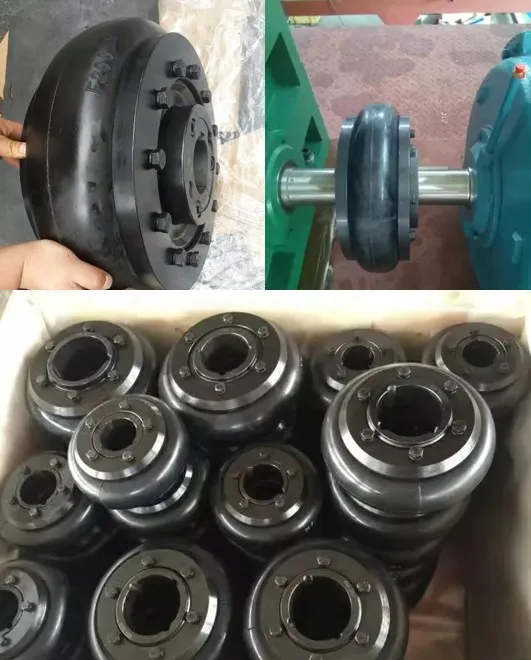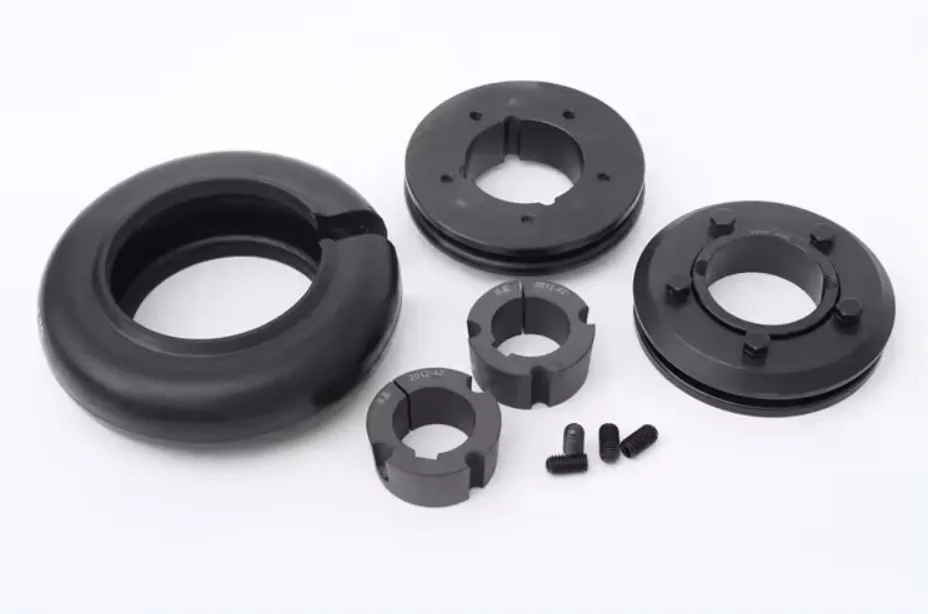4″ Rubber Coupling
Introduction
In this blog post, we will explore the topic of 4″ rubber coupling in detail. Rubber couplings are essential components in various industries, providing a flexible and durable connection between two shafts or pipes. In this article, we will delve into the features, applications, and benefits of 4″ rubber couplings.
1. What is a Rubber Coupling?
A rubber coupling, also known as a flexible coupling or elastomeric coupling, is a mechanical device used to connect two shafts or pipes while allowing for misalignment, vibration reduction, and torsional flexibility. It consists of a rubber element sandwiched between two metal hubs.
2. Benefits of Using 4″ Rubber Couplings
2.1 Shock Absorption: The rubber element in the coupling absorbs shocks and vibrations, reducing stress on the connected equipment and minimizing the risk of damage.
2.2 Misalignment Compensation: Rubber couplings accommodate axial, radial, and angular misalignments, ensuring smooth operation even in challenging conditions.
2.3 Noise Reduction: The rubber material helps dampen noise and vibrations, resulting in quieter operation and a more comfortable working environment.
2.4 Easy Installation: 4″ rubber couplings are designed for quick and straightforward installation, saving time and effort during assembly or maintenance.
2.5 Corrosion Resistance: The metal hubs of the coupling are typically made from corrosion-resistant materials, ensuring long-lasting performance in various environments.
3. Applications of 4″ Rubber Couplings
3.1 HVAC Systems: Rubber couplings are commonly used in heating, ventilation, and air conditioning systems to connect pipes and ducts, providing flexibility and vibration isolation.
3.2 Pump and Motor Connections: Rubber couplings are used to connect pumps, motors, and other rotating equipment, transmitting torque while accommodating misalignments.
3.3 Industrial Machinery: Rubber couplings find applications in various industrial machinery, such as conveyors, blowers, mixers, and crushers, ensuring smooth power transmission.
3.4 Plumbing Systems: In plumbing systems, rubber couplings are used to connect pipes, providing flexibility and compensating for thermal expansion or contraction.
3.5 Automotive Industry: Rubber couplings are utilized in the automotive sector to connect shafts, providing flexibility and reducing vibrations in engines, transmissions, and drivetrain systems.

How to Install Rubber Couplings
Installing rubber couplings is a straightforward process. Follow these steps for a successful installation:
1. Clean the surfaces of the shafts or pipes to be connected to ensure proper adhesion.
2. Position the rubber coupling between the shafts or pipes, aligning the keyways if applicable.
3. Slide the metal hubs onto the shafts, ensuring a snug fit.
4. Tighten the screws or bolts on the metal hubs, evenly applying torque to secure the coupling in place.
5. Perform a visual inspection to verify the proper alignment and attachment of the rubber coupling.

Choosing and Customizing Rubber Couplings
When selecting or customizing a rubber coupling, several parameters and real-life conditions need to be considered:
1. Torque and Power Requirements: Determine the torque and power specifications to ensure the coupling can handle the required load.
2. Shaft Misalignment: Evaluate the expected misalignments (axial, radial, and angular) and select a coupling with suitable flexibility and compensation capabilities.
3. Temperature and Environment: Consider the operating temperature range and environmental factors (chemical exposure, weather conditions) to choose a coupling with appropriate material and corrosion resistance.
4. Size and Dimensions: Determine the required shaft or pipe size and match it with the corresponding coupling size to ensure a proper fit.
5. Application-Specific Requirements: Some applications might have specific demands, such as high-speed rotation, extreme temperatures, or hygienic conditions. Discuss these requirements with experts to find the most suitable coupling solution.

About HZPT
HZPT, located in Hangzhou, Zhejiang Province, is a modern enterprise integrating research, development, production, and international trade. Committed to the core values of integrity, unity, progress, and innovation, HZPT focuses on the research and innovation of couplings. With a global vision, our business spans Asia, Europe, Africa, and North America, aiming to become an internationally influential group.
We specialize in the production and sale of various coupling products, including drum couplings, pin bush couplings, serpentine spring couplings, universal couplings, star couplings, expansion couplings, diaphragm couplings, and tire couplings. Equipped with a complete and scientific quality management system, as well as our dedicated R&D and testing departments, we hold certificates such as CQC, ISO, and CE. We provide excellent sales services and technical support to more than a hundred cooperative enterprises, adhering to the “people-oriented, customer-first” philosophy for mutual development.
If you are looking for reliable and high-quality rubber couplings, HZPT is your ideal choice. Our 4″ rubber couplings offer numerous advantages:
1. Superior Shock Absorption: Our rubber couplings effectively absorb shocks and vibrations, protecting your equipment from damage and ensuring smooth operation.
2. Exceptional Flexibility: With excellent misalignment compensation capabilities, our rubber couplings accommodate various misalignments, guaranteeing reliable performance.
3. Noise Reduction Technology: HZPT rubber couplings are designed to minimize noise and vibrations, creating a quieter and more comfortable working environment.
4. Quick and Easy Installation: Our rubber couplings feature a user-friendly design for effortless installation, saving you time and effort.
5. Reliable Durability: With corrosion-resistant metal hubs and premium rubber materials, our couplings provide long-lasting performance in diverse operating conditions.
